As Sinus tachycardia is a heart rate of more than one hundred beats per minute at rest. It is essential that the excitation comes from the main clock, the sinus node in the right atrium, and that the electrical signal follows the normal conduction system of the heart. A distinction is made between the primary form, in which there are no recognizable organic causes, and the secondary form of sinus tachycardia, which can often be explained by a compensatory response of the heart to an underlying disease.
What is sinus tachycardia?

© Ekaviso - stock.adobe.com
The Sinus tachycardia is an arrhythmia of the heart in which the electrical sequence of the beating rhythm from the excitation in the sinus node and the transmission to the chambers via the AV node corresponds to the normal stimulus transmission system of the heart. A heart rate greater than one hundred beats per minute at rest is classified as sinus tachycardia.
This does not apply to a physiologically determined fast heart rhythm, because the heart rate can increase to over one hundred beats per minute with the appropriate performance requirement and in babies and small children without a pathological sinus tachycardia being present. A distinction is made between primary and secondary sinus tachycardia. It is a primary form of tachycardia when there are no organic or exogenous causes of the high heart rate.
The secondary form is mostly based on a compensatory increase in the beat frequency due to certain target parameters such as insufficient oxygen saturation or due to anemia (anemia). The fast heart rhythm can also be caused by a hormonal disorder or as an undesirable side effect of medication. For example, hyperthyroidism, an overactive thyroid, can cause sinus tachycardia.
causes
By definition, the causes of primary sinus tachycardia cannot be identified, but those of the secondary form of the disease can. Factors that can cause the rapid heart rhythm outside of the frequency increases that are regarded as physiological are very complex and lie in the heart itself or it is anomalies or diseases outside the heart.
In many cases it is a compensatory reaction of the heart in order to compensate for a resulting or an emerging shortage of oxygen and nutrients. Typical causes in this category are oxygen deficiency (hypoxia), anemia (anemia) and abnormally low blood pressure (hypotension), which can be caused, for example, by a lack of fluids (dehydration). Febrile diseases can be classified as conditionally compensatory or conditionally physiological.
An increase in body temperature by one degree Celsius causes the heart rate to rise by around ten beats per minute. It is probably a precautionary measure taken by the body to prevent the threat of an undersupply of oxygen. Metabolic processes are accelerated exorbitantly with an increase in body temperature.
Typical causes of sinus tachycardia, which cannot be explained by compensatory processes, are overactive thyroid gland (hyperthyroidism) and reactions to drugs (sympathomimetics), luxury foods or drugs (caffeine, ecstasy). Other triggers for a pathological increase in heart rate can be due to the heart itself. These are mostly diseases such as heart failure, heart attack or myocarditis.
Symptoms, ailments & signs
Primary or secondary sinus tachycardia initially causes only a few specific symptoms. This is especially true with a permanent increase in heart rate. Tachycardia that occurs only intermittently is usually accompanied by palpable palpitations and a high pulse.
Intermittent and sudden tachycardias often have specific triggers such as stress, anxiety or physical demands. Permanent sinus tachycardia is not necessarily noticeable through palpable palpitations, but rather through general exhaustion and through a reduction in performance during exercise. The heart rate remains unnaturally high even when you are resting.
Diagnosis & course of disease
The most important tools for differentiating sinus tachycardia from other cardiac arrhythmias such as the common atrial fibrillation are electrocardiograms (EKG) and echocardiography, which is carried out externally or as a transesophageal ultrasound examination (TEE). In TEE, the ultrasound device is inserted into the esophagus (esophagus) while the patient is lightly sedated.
The ultrasound examination of the beating heart provides valuable data on the volume of the atria and the ventricles as well as the wall thickness of the myocardium as well as information on the functionality of the individual heart valves. The ECG pattern also allows conclusions to be drawn about possibly existing cardiovascular diseases. Both diagnostics complement each other perfectly and also cover part of the necessary differential diagnostics.
Complications
In the worst case, the sinus tachycardia can lead to heart failure and thus further death of the person concerned. However, this only occurs if the disease is not treated. Those affected suffer from a very high pulse and also from palpitations. There is inner restlessness and patients may also have sweats or panic attacks.
Symptoms such as fear or stress also occur, which have a negative effect on the quality of life of the person concerned. Sinus tachycardia can also occur during physical exertion. In many cases, the patients suffer from fatigue and exhaustion, with the pulse being significantly increased even when the patient is resting.
Treatment of sinus tachycardia is usually based on the underlying disease. In many cases, drugs are used that reduce the heart rate. There are no complications. In acute emergencies, however, treatment by an emergency doctor is necessary to avoid the death of the patient. Unfortunately, it cannot be universally predicted whether the patient's life expectancy will be reduced due to illness.
When should you go to the doctor?
Sinus tachycardia is completely normal in many cases, such as rapid movement or excitement. However, if it occurs more frequently or if the patient cannot explain its occurrence, it is advisable to see a doctor. He can determine whether it is actually a physiological sinus tachycardia or whether there is another clinical picture. The right contacts for this diagnosis are the family doctor, the internist or the cardiologist. In many cases, several visits to the doctor are necessary, because the ideal diagnosis requires that the sinus tachycardia recorded in its occurrence in the ECG and can thus be clearly assessed.
Even after sinus tachycardia has been diagnosed, it can be important to see a doctor. This applies to cases in which the type of cardiac acceleration changes. New symptoms such as dizziness or even fainting make a visit to the doctor urgently necessary. The same applies to cases in which the patient is very frightened by the actual racing heart. Here the danger of cardiac neurosis is to be feared, in which the patient increases himself into harmless symptoms and the quality of life can decrease significantly. A one-off assessment of the health of the heart is helpful, but also a conversation with the psychologist, who can also consider individual behavioral therapy.
Treatment & Therapy
The first goal of treating sinus tachycardia is to analyze the cause. If the cause of the fast heartbeat is known, the complex of causes is treated first, so that if the cause is successfully eliminated or healed, the fast rhythm recedes by itself. There is primary sinus tachycardia, for which no specific cause could be diagnosed.
Treatment consists primarily of symptomatic drug treatment with beta blockers. They occupy the so-called beta receptors so that the stress hormones adrenaline and noradrenaline cannot dock and thus cannot take effect. Blocking the beta receptors in the heart causes blood pressure to drop and the heart to slow down.
In the kidneys, stress hormones even develop a kind of leverage effect, because after the docking of adrenaline and noradrenaline, hormones such as angiotensin are released, which have a vasoconstricting effect and increase blood pressure and heart rate. As in the heart, the beta receptors in the kidney are inactivated by beta blockers so that the stress hormones cannot take effect.
You can find your medication here
➔ Medicines to strengthen the heart and circulatory systemprevention
The best preventive measures to prevent sinus tachycardia are to avoid the risks that can provoke cardiovascular disease. Above all, careful use of caffeine, nicotine and alcohol is recommended. Equally important is a balanced diet that includes foods that are left naturally. A minimum amount of exercise can also be classified in the category of preventive measures.
Aftercare
As a rule, those affected by sinus tachycardia have only limited and only a few measures available for direct follow-up care, so that the person affected should consult a doctor as early as possible. The earlier a doctor is consulted, the better the further course of this disease is usually. Therefore, the patient should initiate treatment at the first symptoms and signs.
Sinus tachycardia cannot heal on its own. In most cases, patients rely on various medications to properly and permanently relieve symptoms. If anything is unclear or if you have any questions, you should always consult a doctor first so that there are no complications in the further course.
In general, stress should also be avoided, whereby the person affected should rest and take it easy. In sinus tachycardia, a healthy lifestyle with a balanced diet can also have a positive effect on the further course of this disease, whereby obesity should also be avoided. In some cases, the disease can also reduce the life expectancy of those affected.
You can do that yourself
Sinus tachycardia is in many cases physiological and does not require treatment. However, if it bothers the person concerned or even scares them, there are means of self-help with which the phenomenon can often be mastered. The prerequisite for this is that the accelerated heartbeat has been clarified beforehand by a cardiologist or at least a family doctor. This is not only for the safety of the patient, but also to calm him down, which is often very important for coping with sinus tachycardia from a psychological point of view.
The psychological component in particular is very important in a racing heart. If those affected think that they have a heart disease, the fear intensifies the racing heart and a vicious circle can arise. It is therefore very important that after the medical examination, those affected keep in mind that an accelerated heartbeat is completely normal during sex, excitement and exercise. If this does not work, psychological support is often advisable so that a heart neurosis cannot develop.
In everyday life, an acceleration of the heartbeat can be reduced or even avoided. The consumption of nicotine, alcohol and coffee is an essential factor for accelerating the heart and therefore to limit it as best as possible. Palpitations after a large meal are also possible. One speaks here of Roemheld syndrome. This can be avoided if patients do not eat such large servings, especially before bed.

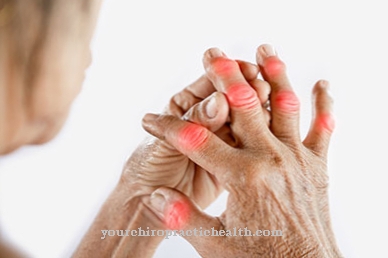
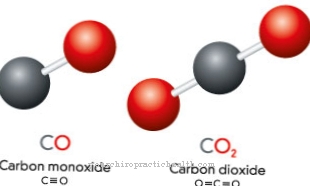
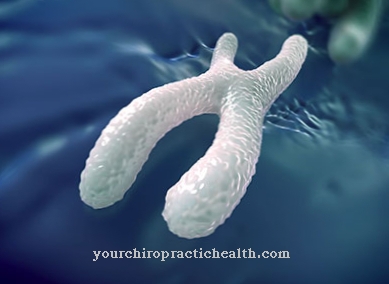
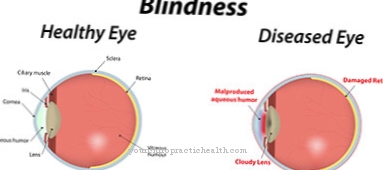
.jpg)
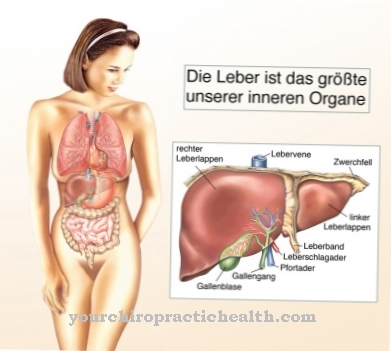

















.jpg)



